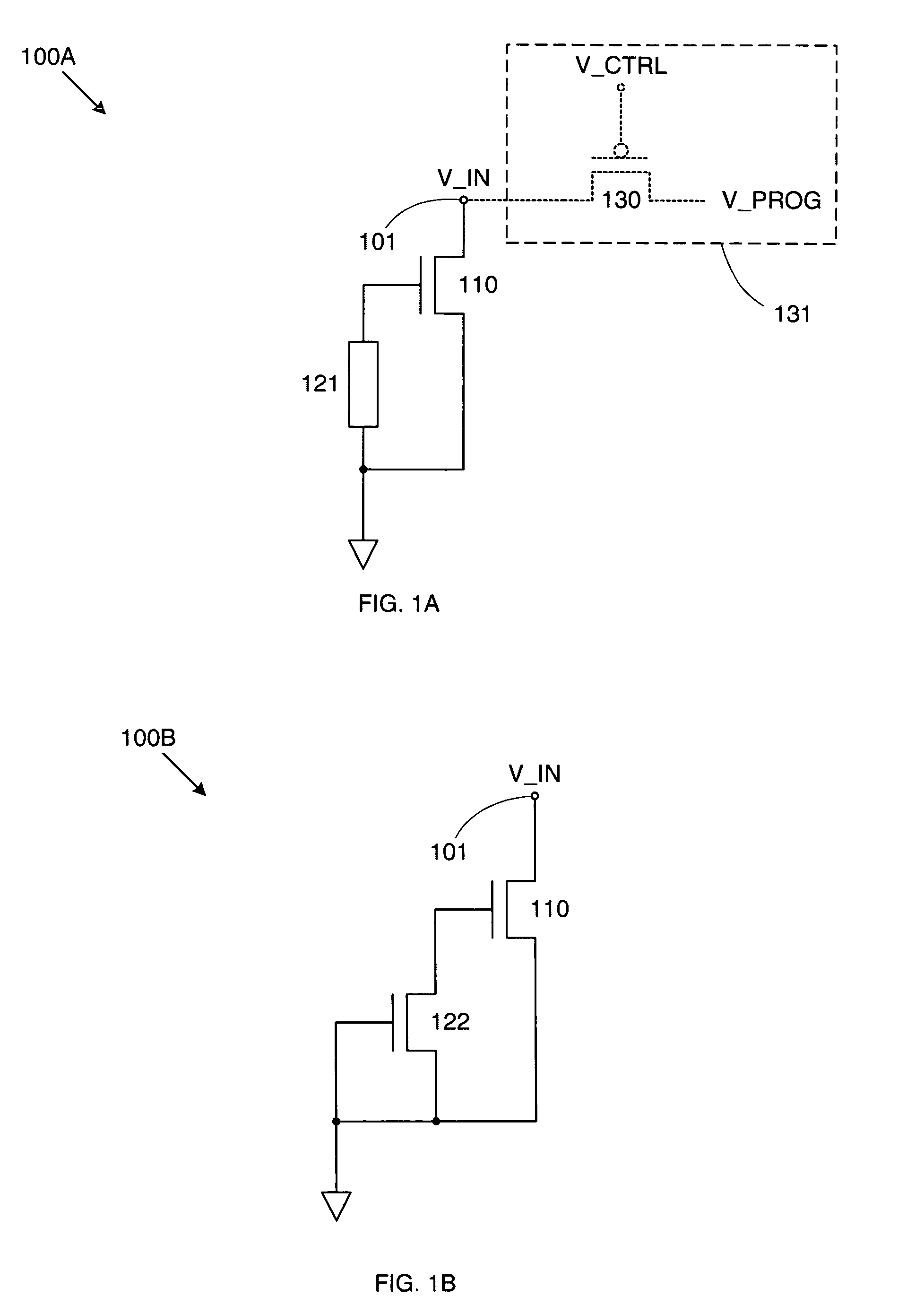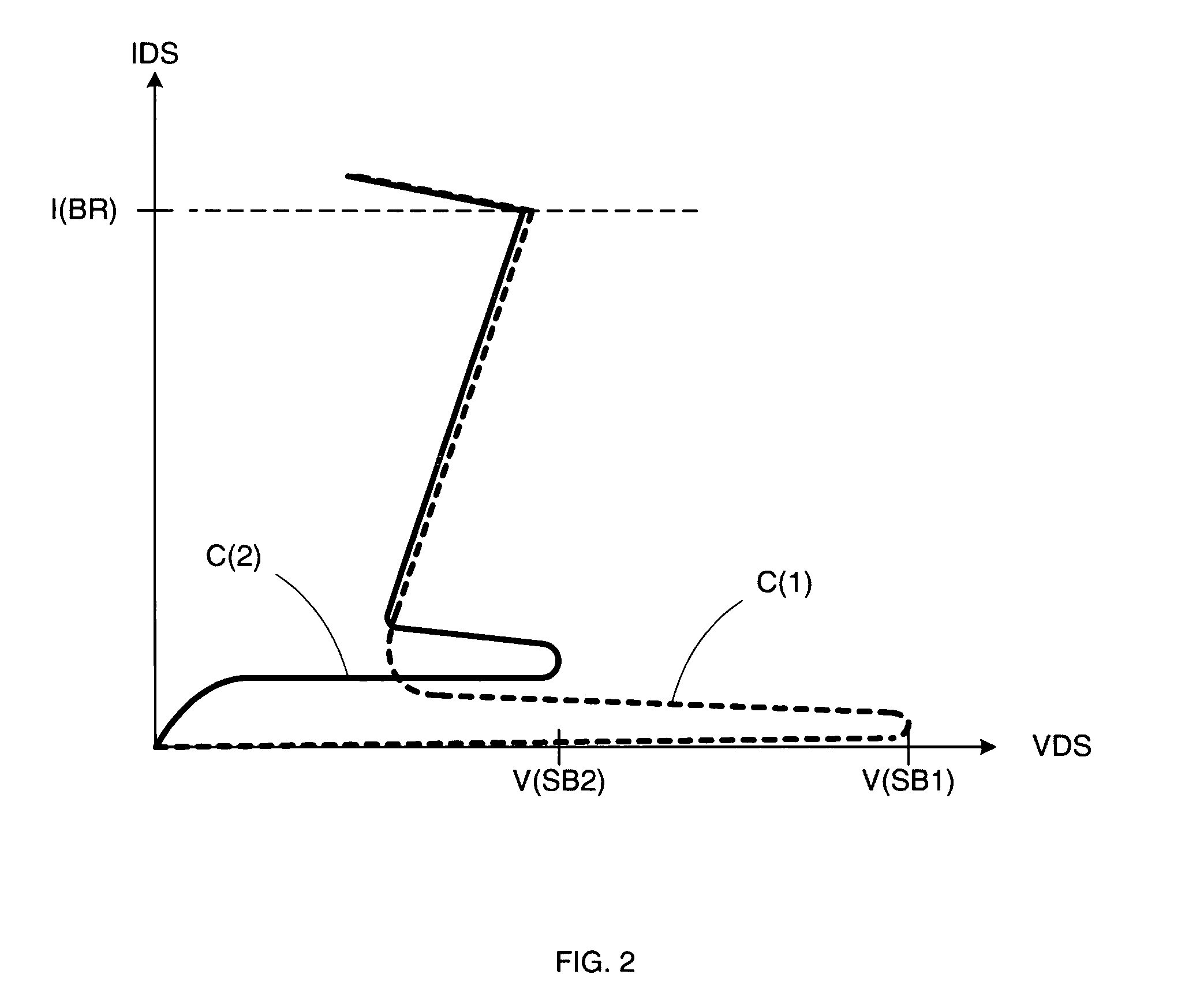Electrical fuse for integrated circuits
- Summary
- Abstract
- Description
- Claims
- Application Information
AI Technical Summary
Benefits of technology
Problems solved by technology
Method used
Image
Examples
Embodiment Construction
[0018]FIG. 1A shows an electrically programmable fuse 100A in accordance with an embodiment of the invention. Fuse 100A includes an NMOS programmable transistor 110 and a resistive element 121. Resistive element 121 can comprise any structure or device that provides a desired resistance (e.g., a polysilicon resistor). The drain of programmable transistor 110 is connected to an input terminal 101, while the source of programmable transistor 110 is connected to ground. (Note that as used herein, “ground” refers to the lower supply voltage of the circuit that includes the fuse of the invention.)
[0019]Meanwhile, resistive element 121 is connected between the gate and source of programmable transistor 110, thereby coupling the gate of programmable transistor 110 to ground. As a result, when fuse 100A is in an unprogrammed state, programmable transistor 110 is essentially off—i.e., when an input voltage V_IN at input terminal 101 is equal to a read voltage (typically the nominal operating...
PUM
 Login to View More
Login to View More Abstract
Description
Claims
Application Information
 Login to View More
Login to View More - R&D
- Intellectual Property
- Life Sciences
- Materials
- Tech Scout
- Unparalleled Data Quality
- Higher Quality Content
- 60% Fewer Hallucinations
Browse by: Latest US Patents, China's latest patents, Technical Efficacy Thesaurus, Application Domain, Technology Topic, Popular Technical Reports.
© 2025 PatSnap. All rights reserved.Legal|Privacy policy|Modern Slavery Act Transparency Statement|Sitemap|About US| Contact US: help@patsnap.com



